There may be as many as one thousand lay preachers in the archdiocese of Guatemala, yet that archdiocese, if measured by the number of priests and parishes, is only half in size of the diocese of Brooklyn. In Latin America the reforms of the Council of Trent were blocked by the Spanish crown; as a consequence, the medieval religious pluralism continued until modern times. A report to the king by the archbishop of Guatemala in the middle of the 18th century mentions the existence of 1,963 confraternities but only 122 parishes in his archdiocese – which would make it 16 per parish; they had their chapel, their patron saint, feasts and processions, and their own chaplain. Today in Guatemala, the charismatic groups form local, departmental and national structures, each of which may have its own preachers. Thus in the local group on the north of the capital city (one of nine) there are about twenty preachers who go the prayer groups to preach several times a year for a fee. Moreover there is a TV station, JesusTV, and several radio stations broadcasting Catholic "evangelical" news and spiritual talks.
It should be clear that I am not opposing priests and lay prayers; on average, priests are better preachers than lay people. My purpose is not to oppose priest and lay preachers, but to find out what can be learned from the comparison of the two samples.

In 2011 The Catholic station, JesusTV, aired 22 programs per week animated by nine women, five lay men, five couples, and four priests. From these programs I have selected ten lay talks and analyzed their content. I also combined and averaged the 100 priestly homilies from the U.S. and Guatemala. Here is a comparison of the two samples:
Lay preachers Priestly homilies
Church doctrine ..............................................................24%............... 4%
Biblical & spiritual doctrine .........................................25.5% .............0
Biblical comments & commentaries ................................5% ..............49%
Spiritual generalities....................................................... 2% ..............16%
Exhortations & recommendations ...................................13% .............12%
Faith sharing................................................................... 13% ..............0
Prayer .............................................................................10.5%..... ......0
Inaudible ...........................................................................0 .................8%
Dispensable .......................................................................0 .................6%
Various categories .............................................................7% .............5%
There are stark differences between the two groups. Lay preachers teach doctrine, theological and spiritual, while priests do not. The latter offer generalities and general comments in reference to bible readings, while the lay preachers tend to avoid them. The lay speakers share their personal faith; priests do not. The laity includes prayers in their talks; priests do not. Let us look at these differences.
Prayer during the religious talks varies from one presentation to the next; some pray at the beginning, others at the end, others at both ends, others not at all. Fr. Estrada, the main speaker and advisor of JesusTV, never prays during his biblical reflections. Hence prayer in these talks is totally a lay initiative.
In the lay sample, theology is neither catechism nor abstract doctrine learned in seminaries – to my knowledge none of the lay preachers has a university theology terminal degree – but basic principles of faith. Let us turn to examples that are high in doctrine, without distinguishing between theological and spiritual doctrine, as the distinction is often blurred.
1. “Marriage for a new age” is a weekly program sponsored by the Velazquez couple, Hugo and Gris. Each week they talk on a different topic. Here are excerpts from the week I recorded. “The topic of today is how the Word of God helps us in everyday life and how to communicate with our Creator.... God revealed himself, because, as said in John, the Word became flesh and stayed
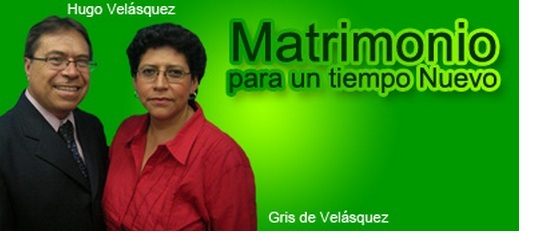 with us. God wants to communicate with us.... The Word of God is transformative; it affects our lives. As stated in Isaiah 55:10 ‘As the rain and the snow comes down from the sky and does not return without having watered the soil...’ similarly, the word of Scripture transforms the lives of those who receive it... In Scripture we find advice about how a wife should relate to her husband and vice-versa, and how children should relate to their parents (Ephesians 5 and 6, and Ecclesiasticus 5:30). Don’t be afraid to open the bible, because it gives us faith and hope. Psalm 119 says ‘Your word is lamp for my feet and a light for my journey.’ By becoming familiar with scripture, our lives will be full of blessings, full of love, respect, and trust; our marriage will be overflowing. Don’t you think that this is marvelous? This summary shows one major characteristics of all lay sermons: biblical knowledge rather than generalities; a biblical culture rather than general comments about the bible.
with us. God wants to communicate with us.... The Word of God is transformative; it affects our lives. As stated in Isaiah 55:10 ‘As the rain and the snow comes down from the sky and does not return without having watered the soil...’ similarly, the word of Scripture transforms the lives of those who receive it... In Scripture we find advice about how a wife should relate to her husband and vice-versa, and how children should relate to their parents (Ephesians 5 and 6, and Ecclesiasticus 5:30). Don’t be afraid to open the bible, because it gives us faith and hope. Psalm 119 says ‘Your word is lamp for my feet and a light for my journey.’ By becoming familiar with scripture, our lives will be full of blessings, full of love, respect, and trust; our marriage will be overflowing. Don’t you think that this is marvelous? This summary shows one major characteristics of all lay sermons: biblical knowledge rather than generalities; a biblical culture rather than general comments about the bible.
2. The weekly youth program is the specialty of Rebecca Palacios, a psychologist in private practice who also works in a lay evangelization center involving about hundred
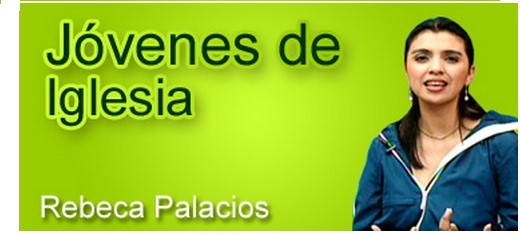 volunteers directed by her father. Her parents worked for 23 years in a school for lay preachers, hence she received a serious biblical education since childhood; her eight brothers are also all involved in the renewal. The topic of the week was, “You and I belong to God” which she repeated over and over like a mantra, with an indelible effect. “In Ezekiel 18:4 we read: ‘All lives belong to me, that of the father and that of the son,’ and in 8:5-10, do justice to the poor and live a life of holiness. What is noteworthy here is the forcefulness of the argument: “You and I belong to God. Our works belong to God.” This is a high level of spiritual maturity.
volunteers directed by her father. Her parents worked for 23 years in a school for lay preachers, hence she received a serious biblical education since childhood; her eight brothers are also all involved in the renewal. The topic of the week was, “You and I belong to God” which she repeated over and over like a mantra, with an indelible effect. “In Ezekiel 18:4 we read: ‘All lives belong to me, that of the father and that of the son,’ and in 8:5-10, do justice to the poor and live a life of holiness. What is noteworthy here is the forcefulness of the argument: “You and I belong to God. Our works belong to God.” This is a high level of spiritual maturity.
3. The weekly program “The art of being a woman” is animated by a parish prayer group, with Flory de Sanchez as the main speaker; this is obviously not a club of intellectuals and theologians, as the program is directed mainly to housewives who can watch it in the morning when it is aired. The topic of the day was “The time of God,” using Luke 8:40-56 on the healing of Jaire’s daughter as background text for the presentation. A quantitative analysis of the talk illustrates its content: introduction (16%); asking God in humility, which was a kind of theological reflection (21%); having faith when confronted with God’s silence – a spiritual principle (56%), and a final prayer (7%). Jesus asked, ‘Don’t fear; just believe!’ We must have faith even when things seem to go from bad to worse.” A prayer of faith followed appropriately.
4. “Woman, if you knew!” is the thriving ministry of Nancy de Cabrera, a full time preacher who animates this program. Each week this ministry to women is introducedthus: “It is the women who promote and support life, values, and faith, according to document of Santo Domingo. Our mission is to recover the dignity and the vocation of women. We want women to stand up, with the strength of the Holy Spirit and the intercession of Mary our Mother, through our ministries, namely, breakfasts, retreats, seminars, and a radio program. Woman, if you knew! Today you can again hear the voice of God who tells you, ‘Woman, if you knew how much I love you!’”
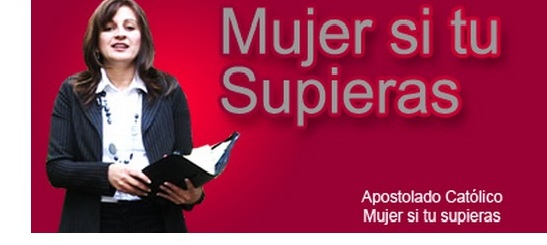 The program of the recorded week was on how to handle suffering, occasioned by the deep grief of a friend who found her husband dead in bed in the morning, but repressed her grief. “In 2 Samuel 1:2-4 David is informed of the death of Saul and his son Jonathan, David’s closest friend, about whom he had said ‘I love you more than all the women, more than my brother.’” What is special here is Nancy’s exceptional empathy with the suffering of others, as she narrates several stories of pain, none of which seem to have been her own. Her attitude towards suffering is inspired by both the emotionality of tragedies and her deep biblical culture. For her, David and Jonathan are departed brothers telling us again their story for our benefit.
The program of the recorded week was on how to handle suffering, occasioned by the deep grief of a friend who found her husband dead in bed in the morning, but repressed her grief. “In 2 Samuel 1:2-4 David is informed of the death of Saul and his son Jonathan, David’s closest friend, about whom he had said ‘I love you more than all the women, more than my brother.’” What is special here is Nancy’s exceptional empathy with the suffering of others, as she narrates several stories of pain, none of which seem to have been her own. Her attitude towards suffering is inspired by both the emotionality of tragedies and her deep biblical culture. For her, David and Jonathan are departed brothers telling us again their story for our benefit.
5. In the series “A woman of virtue,” Mary de Reina tells the story of a man who abandoned his wife and children. I know from an interview with Mary that this is her own story. After her husband left, she struggled for 15 years with depression and low self-esteem, before finding “the strength of God in a retreat.” After another few years of inner struggle, she started helping others in a women’s group. She was and is a secretary, but she can also speak in public and television about reclaiming our inheritance.
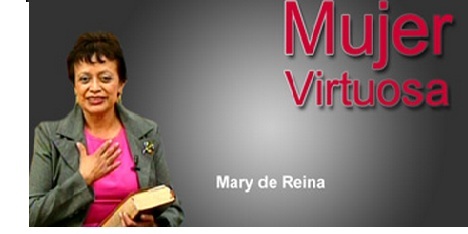 Of special interest is Mary’s theology. “Many people tell me, ‘I was born to suffer. That’s the way I was since I was small. I suffered a lot. Much poverty. Alcoholic father; parental conflict.’ But I want to tell you, you were not born to suffer or have bad luck in life. God created you so that you may enjoy God’s inheritance. According to Genesis 1:26, we were created in a way to be able to have dominion over the world.” In the mouth of a Protestant pastor, this would be read as prosperity theology; I will call it incarnational theology, in contrast to the traditional theology of redemptive suffering; the two are complementary, but not as Protestant versus Catholic.
Of special interest is Mary’s theology. “Many people tell me, ‘I was born to suffer. That’s the way I was since I was small. I suffered a lot. Much poverty. Alcoholic father; parental conflict.’ But I want to tell you, you were not born to suffer or have bad luck in life. God created you so that you may enjoy God’s inheritance. According to Genesis 1:26, we were created in a way to be able to have dominion over the world.” In the mouth of a Protestant pastor, this would be read as prosperity theology; I will call it incarnational theology, in contrast to the traditional theology of redemptive suffering; the two are complementary, but not as Protestant versus Catholic.
6. I must present at least one male preacher. Alberto Salazar speaks weekly on “The Basic doctrines of the Catholic Church.” He is a full time lay preacher, having given up his job (even his retirement pension) to depend totally on God. He is very productive, performing “the clown of God” show for children, giving seminars, preaching and writing books on Catholic devotions. The topic of the day was “The family as sanctuary of life.” Here is a quantitative summary: theological doctrine: 9%; faith sharing: 27%; devotions: 58%, and final prayer: 5%. All of Alberto’s presentations in the series on “basic doctrines” are theological (although he has no university theology degree), but in the one recorded he described Christian life through faith sharing. “I learned from my grandmother to pray before I learned to read. My mother was a prayer leader (rezadora) in my neighborhood. It is my family prayer with my wife that supported us in the difficult times of the death of our two children, one in an accident and the other from cancer.” This was a painful time: in 2007, Alberto lost his son of thirty who was his main collaborator, and one year later, his daughter. “To bury your father and mother is painful and normal, but to bury your son is devastating. However, always on my mind was, ‘God has given; God has taken; glory be to God.’”
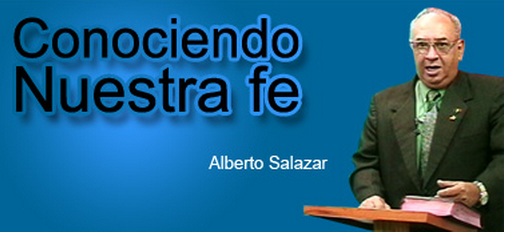 Besides faith sharing, much of his talk was about devotions, usually as lived experiences. “Morning and evening prayers. I remember these prayers with nostalgia, prayers I learned from my parents and which I have taught to my children. Prayers for the sick and the dying to accompany them in these trying times. Devotions to the Blessed Sacrament. We have rotating expositions of the Blessed Sacrament since 1774; this is something we have received from our forefathers. The popular devotions help us participate in the liturgy, during advent, the posadas and the crèches; during Lent, the processions and th
Conclusion: In contrast to priests, lay preachers 1) often quote scripture. 2) They avoid general comments about the readings and spiritual generalities but offer biblical and theological doctrine. 3) They avoid general exhortations but offer practical recommendations. 4) They preach by examples, not just in words, sharing their faith experiences, big sand small. 5) Their preaching is clearly bible-centered and Christocentric.e ways of the cross. I was lucky to have a very religious family which gave me the opportunity to practice all these devotions. It is from within a Christian family that we can build a culture of faith.”
Besides faith sharing, much of his talk was about devotions, usually as lived experiences. “Morning and evening prayers. I remember these prayers with nostalgia, prayers I learned from my parents and which I have taught to my children. Prayers for the sick and the dying to accompany them in these trying times. Devotions to the Blessed Sacrament. We have rotating expositions of the Blessed Sacrament since 1774; this is something we have received from our forefathers. The popular devotions help us participate in the liturgy, during advent, the posadas and the crèches; during Lent, the processions and th
Conclusion: In contrast to priests, lay preachers 1) often quote scripture. 2) They avoid general comments about the readings and spiritual generalities but offer biblical and theological doctrine. 3) They avoid general exhortations but offer practical recommendations. 4) They preach by examples, not just in words, sharing their faith experiences, big sand small. 5) Their preaching is clearly bible-centered and Christocentric.e ways of the cross. I was lucky to have a very religious family which gave me the opportunity to practice all these devotions. It is from within a Christian family that we can build a culture of faith.”
DISCUSSION QUESTION: WHAT IS THE FUTURE OF LAY PREACHING?
NOTE: Lay people can teach/preach/write/blog/talk etc. in schools, parishes, conventions, catechism classes, on TV, the Internet, at devotional meetings, at Holy Hours, funerals, Sunday celebrations without a priest, retreats, parish and foreign missions, house to house evangelization, religious communities, prayer groups, vespers and compline, the stations of the cross, etc. that is, at any time and anywhere with only one exception: at priestly liturgies.